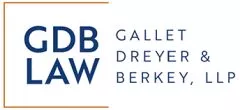Novartis Pharms. Corp. v. Accord Healthcare Inc., No. 2021-1070 (Fed. Cir. June 21, 2022).
In a reversal of fortunes, the Federal Circuit entertained a petition for rehearing from the losing side of a decision on Jan. 3, 2022 in this case, and has now decided that the claims are invalid for failure to meet the written description requirement. This case hinges on whether a negative claim limitation, “absent an immediately preceding loading dose regimen” is supported by the specification even though the disclosure is silent as to “loading doses.” The District Court and the earlier Jan. 3, 2022 decision held that this claim limitation was supported in the disclosure, but on June 21 a new panel reversed.
The patent at issue is US 9,187,405 which claims the use of the drug fingolimod in the treatment of multiple sclerosis. Each claim of the '405 patent requires administering fingolimod “at a daily dosage of 0.5 mg, absent an immediately preceding loading dose regimen” (emphasis added). This loading dose claim limitation was added in prosecution to overcome prior art.
Novartis sued several generic drug companies for infringement of the ‘405 patent in an ANDA litigation. The generic drug companies denied infringement and counterclaimed that the ‘405 was invalid. The parties zeroed in on written description as the invalidity question to be decided.
The District Court concluded that the negative claim limitation was sufficiently supported by the patent specification, and the original Federal Circuit panel agreed in a split decision (Linn, O'Malley, dissent by Moore). The original majority asserted that there is no new and heightened standard for negative claim limitations, citing to Inphi Corp. v. Netlist, Inc., 805 F.3d 1350, 1356 (Fed. Cir. 2015). The majority held that the patent applicant possessed the invention (claim-recited dosages) as of the patent filing date and rejected defendant HEC's arguments that the patent applicant used “mathematical sleights of hand” and that the specification lacked “blaze marks” to support the negative claim limitation.
But Judge Moore, in her dissent, was troubled that there was no explicit or implicit suggestion of the negative claim limitation in the specification. She states that “silence is not disclosure,” and that loading doses are not discussed in the specification. Moreover, Judge Moore noted that the MPEP § 2173.05(i) states the mere absence of a positive recitation is not enough, and silence alone is insufficient to support a negative claim limitation added in prosecution. Thus, Judge Moore would have found in the original decision that the claims failed to support the claim limitation that there was no loading dose in the specification.
After the Jan 3, 2022 decision, HEC filed a petition for rehearing or rehearing en banc. In the meantime, Judge O'Malley retired (effective March 11, 2022) and Judge Hughes joined the panel. The new panel granted HEC's petition for rehearing and reversed the original panel decision, this time with Moore and Hughes in the majority and dissent by Judge Linn.
The new panel took a much stricter approach to a negative claim limitation, stating that there is adequate written description when, for example, “the specification describes a reason to exclude the relevant [element].” Santarus, Inc. v. Par Pharm., Inc., 694 F.3d 1344, 1351 (Fed. Cir. 2012). A reason to exclude an element could be found in statements in the specification expressly listing the disadvantages of using that element or that the specification distinguishes among the element and alternatives to it. Slip op. at 5 (quotations and citations omitted). Although the majority conceded that while a negative limitation need not be recited in the specification in haec verba, the majority insisted there must be something in the specification that conveys to a skilled artisan that the inventor intended the exclusion, such as a discussion of disadvantages or alternatives. Thus, the majority found that the claims lacked support for the negative claim limitation.
Judge Linn, now the minority, argued that the majority analysis employed a heightened standard of “necessary exclusion” against which to assess the district court's fact findings and used that standard to overrule the district court. Judge Linn objected to this, arguing that “necessary exclusion” is not and should not be a requirement in every case. Judge Linn argued the critical question is whether the inventor has “possession” of the subject matter on the filing date, citing to Ariad 598 F.3d at 1351. This is a question of how a person of skill in the art would read the disclosure (slip op. at 7), and Linn would conclude that Novartis has met the burden of showing possession. Judge Linn also warns against applying rigid rules that the Supreme Court rejected in KSR (id.).
Perspective
This opinion tilts the playing field towards patent challengers. In the dynamics of patent prosecution, claims amendments of this nature (negative limitations and other amendments) are routinely added to circumvent prior art objections and satisfy patent examiners.
The majority insists they are not applying a heightened standard (slip op. at 12) but that is exactly what they have done. To rigidly apply the standard that a claim limitation must be explicitly stated in the specification (what Judge Linn calls a “necessary exclusion”), which is really what happened here, is a harsh standard.
Patent drafters make best efforts to anticipate examiner's objections and discuss alternatives and embodiments in the specification. But examiners are always one step ahead and can raise objections on prior art the applicant may not have considered. This is why applicants are allowed to amend the claims. Patent drafters have no way to anticipate every objection that can be raised by an examiner, so must have the freedom to make claim amendments within the scope of the disclosure – even of possible features raised by an examiner that the patent drafter never considered. Such features may be within the ambit of “mere silence” in the initial disclosure. Here, the absence of a leading dose was within the scope of the disclosure – the evidence is that the patent drafters didn't even consider that concept at the time the patent application was drafted. This holding is contrary to the freedom to amend that patent drafters and applicants need to get issued patents.
Lessons
Part of the art of patent drafting is anticipating what examiners and patent challengers will argue and addressing these potential arguments in the specification and claims. So one approach to the issues raised here is to draft as expansive a specification as possible. An unwieldy approach is to think of a thousand variations, no matter how remote, and address each of them in the specification.
But in many cases, there may be another option open to patent applicants – using less inclusive transitional phrases. So rather than claiming “A ___ comprising XX wherein there is no [negative limitation],” (as was done in this case) a patent claim could be redrafted to recite “A ____ consisting of XX” which is a closed ended transition, and automatically excludes other features. A closed transition is narrowing but at least it may survive a written description challenge in litigation.
Yet another option is filing a continuation in part, to clarify features not originally considered and explicitly exclude them.
The content of this article is intended to provide a general guide to the subject matter. Specialist advice should be sought about your specific circumstances.

